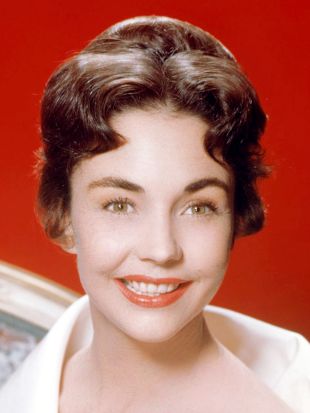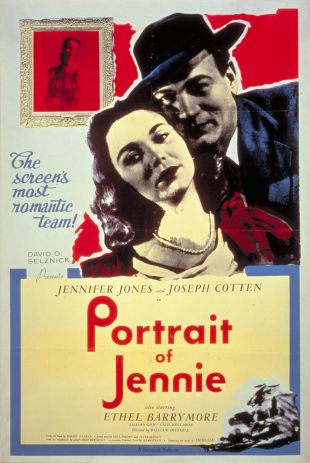Though often overshadowed by some of her female contemporaries as the years passed, Jennifer Jones came to embody one of the preeminent examples of a Hollywood star. With qualities that transcended preternatural beauty, she projected the sort of charisma that cannot be feigned, courting legions of fans in the process, as she graced one film after another with her presence. And then, just as suddenly as she had risen to greatness, Jones dropped out of the limelight and withdrew into anonymity, spending the last several decades of her life well outside of the public eye.
Jennifer Jones began life in Tulsa, OK, as Phyllis Isley, the daughter of vaudeville performers. Ensconced in show business from the beginning, she dreamed of establishing herself as an actress from early childhood. As a young woman, Isley studied at New York's American Academy of Dramatic Arts and revealed incredible promise; during that tenure, she also met and grew enchanted with a young actor named Robert Walker; they did summer stock together, fell deeply in love, married, and parented two children, Robert Walker, Jr., and Michael Ross Walker. Then Hollywood beckoned to Isley, first with a supporting role in a Republic western, and then in the form of a talent agent from megaproducer David O. Selznick, the giant responsible for Gone With the Wind. Though the agent sensed greatness from the ingenue's initial reading and arranged a meeting between Isley and Selznick without hesitation, Isley reportedly felt ashamed by the Republic B picture and attempted to obscure its presence. She needn't have worried; the initial meeting between Selznick and Isley (whom he renamed Jennifer Jones) permanently changed both of their lives and made Jones a household name.
For years, film historians have speculated (and fans have gossiped) about the initial exchanges that materialized between Jones and Selznick, the history of their relationship, and some of the tragedies surrounding it. Many of the exact details will never be known, but readily apparent were Selznick's vision of Jones as his next great star, Jones's decision to leave and then divorce Walker and marry Selznick, and Walker's understandable difficulty in handling these events. By all accounts an emotionally fragile individual (though an incredibly kind and sensitive one), Walker himself moved to Hollywood and experienced a brief period of stardom that peaked with a lead role in Hitchcock's 1951 Strangers on a Train, but he could never quite emotionally adjust to the end of his marriage, or the fact that Jones had left him and married the single most powerful and wealthy person in Hollywood. On a note of sad irony, the two appeared opposite one another as former lovers in a blockbuster produced by Selznick, the 1944 Since You Went Away. Tragically, Walker struggled for years to cope with the divorce, and his life ended at the age of 32, when, following a nervous breakdown and an institutionalization, he received a fatal dose of sodium amatol from a psychiatrist.
Jones did the bulk of her early work under new husband Selznick's aegis, and for 15-20 years her career thrived. Selznick preferred casting her in romantic material (often with a tragic undercurrent), and his instincts struck a chord with the public. After receiving an Oscar for her turn as the scorned and martyred Catholic saint Bernadette in the 1943 religious drama The Song of Bernadette, she starred opposite Joseph Cotten in the 1948 fantasy romance Portrait of Jennie (also a huge hit), played Emma Bovary in Vincente Minnelli's 1949 Madame Bovary, and the tragic title character in William Wyler's Theodore Dreiser adaptation Carrie (1952). Yet Jones also unveiled a wicked flair for comedy on a number of occasions, notably as an English cockney plumber in Ernst Lubitsch's magnificent 1946 farce Cluny Brown, and as an English lord's wife plagued by pathological lying in the unfairly maligned John Huston comedy Beat the Devil (1953).
Jones continued her acting work into the late '60s, and she racked up a series of four additional Oscar nods for various performances, yet her screen appearances grew less and less frequent. Her private life and marriage to Selznick reportedly brought its share of complications, and the couple's first pregnancy ended in a miscarriage; following Selznick's death in June 1965, Jones endured a lengthy period of severe depression. The actress remarried philanthropist Norton Simon in the early '70s, and co-ran a foundation that he chaired, with the assistance of various celebrity friends. The second marriage lasted until Simon's death in the summer of 1993. Jones accepted one of her final screen roles in the 1974 disaster opus The Towering Inferno, a part for which she drew a substantial amount of acclaim. The actress died in December 2009 at the age of 90.



